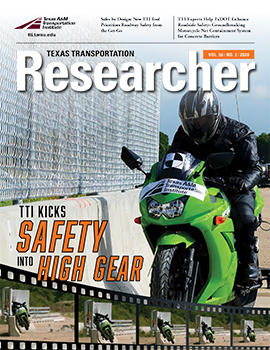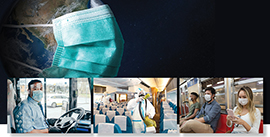
Historically, transportation research has focused on avoiding dangers we can see. The first traffic light troubleshot human errors in judgment by better regulating traffic flow. As the 20th century unfolded, our focus shifted to innovations like seat belts and air bags to help us survive crashes we couldn’t avoid. Nowadays, sensors and cameras — high-tech “eyes” in connected-automated vehicles — guide self-driving cars around roadway hazards.
We’ve survived viral threats before, but the COVID-19 pandemic will have long-lasting impacts felt on a global scale. Texas A&M Transportation Institute (TTI) experts have published numerous articles in recent months identifying some of these: from teleworking becoming the new normal (and the impact on congestion and mobility) to the effects of pandemic protocols on public transportation and the economic supply chain. (Access these insights at https://tti.tamu.edu/covid-19/.)
In the wake of COVID-19, we must zoom in our view of safety to include dangers we can’t see: microbial threats even more deadly in the scale of their effect than roadway hazards. As we evolve our research agenda, our ingenuity and innovation must address the harder-to-see hazards on our steering wheels, bus handrails and airline seats. We must redefine the concept of individual safety beyond safety belts and airbags to include personal hygiene and its impact on our shared transportation environment.
The concept of shared mobility has new resonance in the wake of COVID-19: public transit, rental cars and airline flights are just a few travel spaces we share. In fact, the Transportation Research Board forum I co-chair is currently evaluating research topics that examine transportation exclusively within the context of mitigating the spread of deadly diseases. TTI, too, is reexamining how we can adapt our research approach to promote public safety by focusing on these kinds of threats. And on the front lines of the viral war, New York’s Metropolitan Transportation Authority is pilot-testing the use of ultraviolet light to kill viruses in public spaces like hospital operating rooms and subways.
Such innovative approaches to safety represent an expansion of how we define public health within the context of transportation. We should absolutely continue more traditional research efforts in developing crash-avoidance technologies and conducting behavioral research aimed at preventing crashes. But we should also focus on discovering and developing new ways to apply technology to protect public health from contagious diseases like COVID-19. We can start by looking at — and seeing — the concept of transportation safety a little differently.

